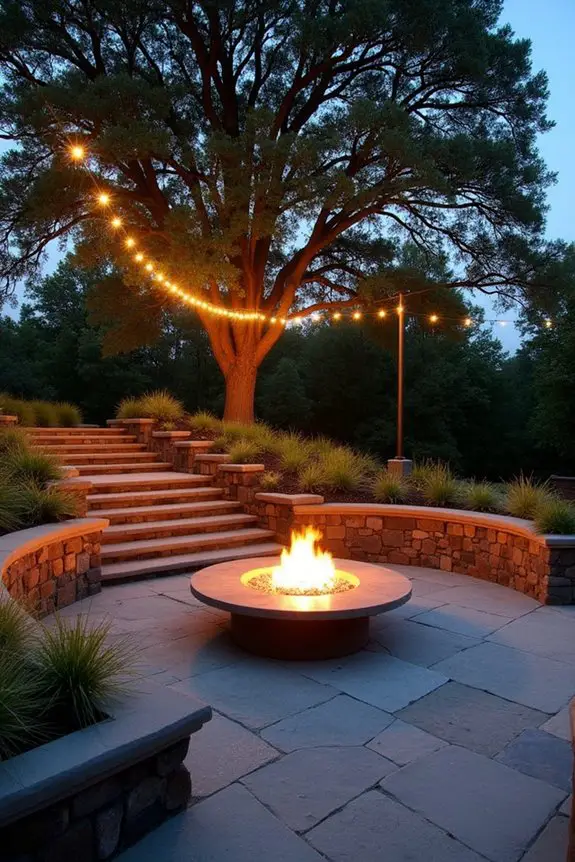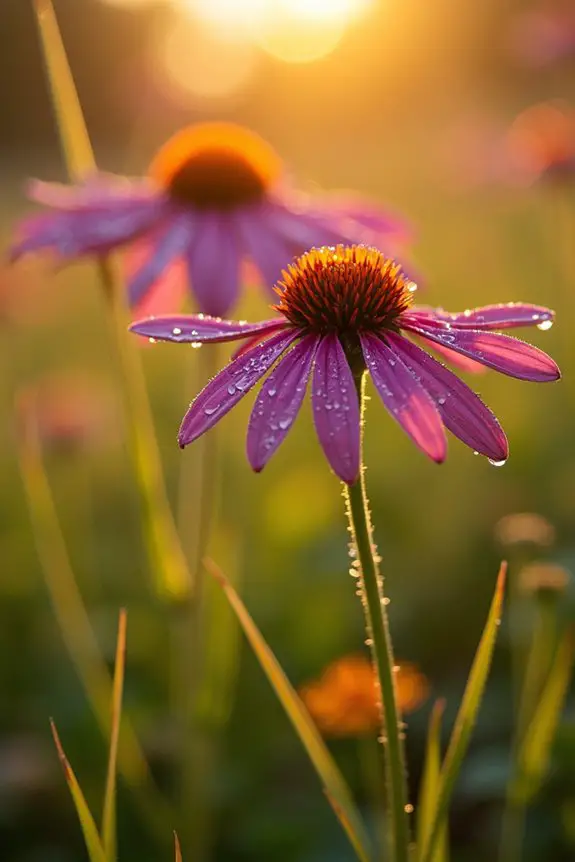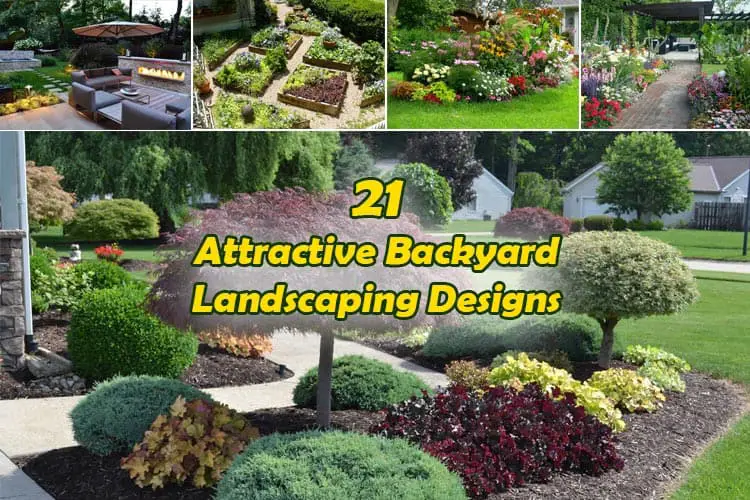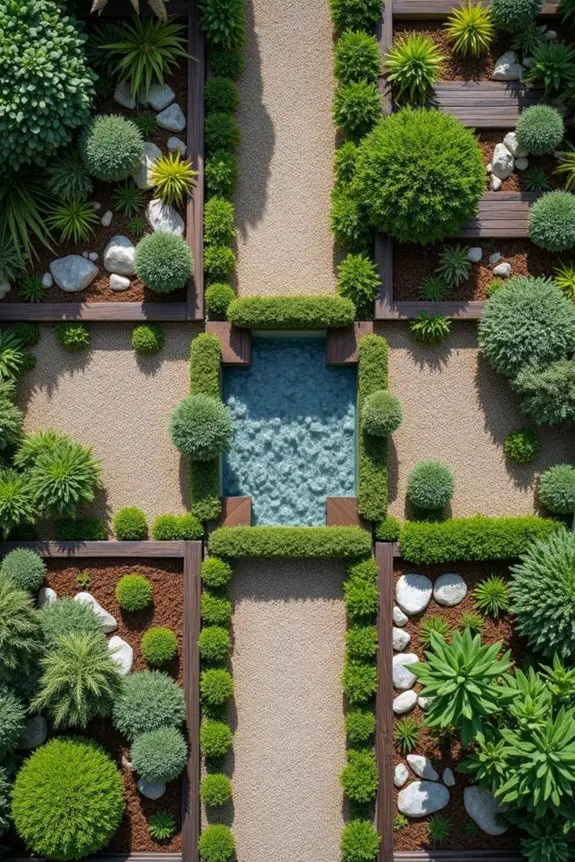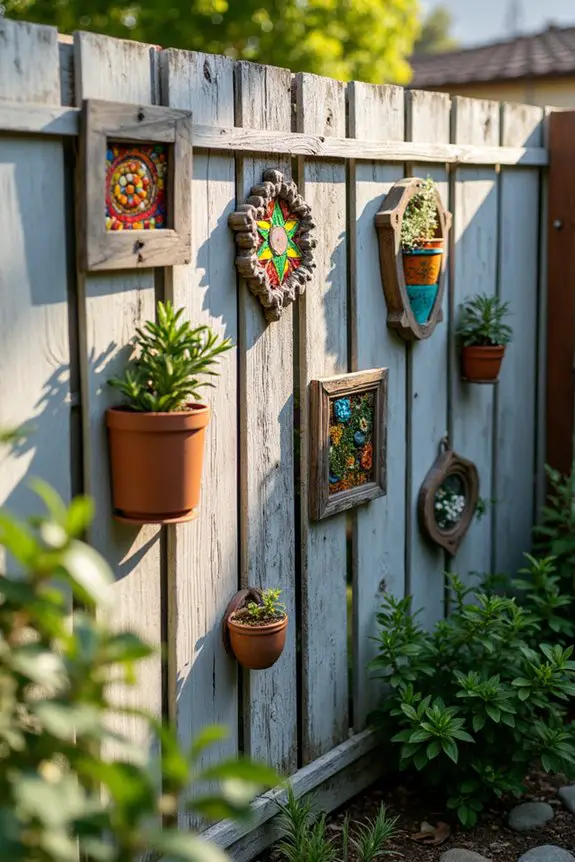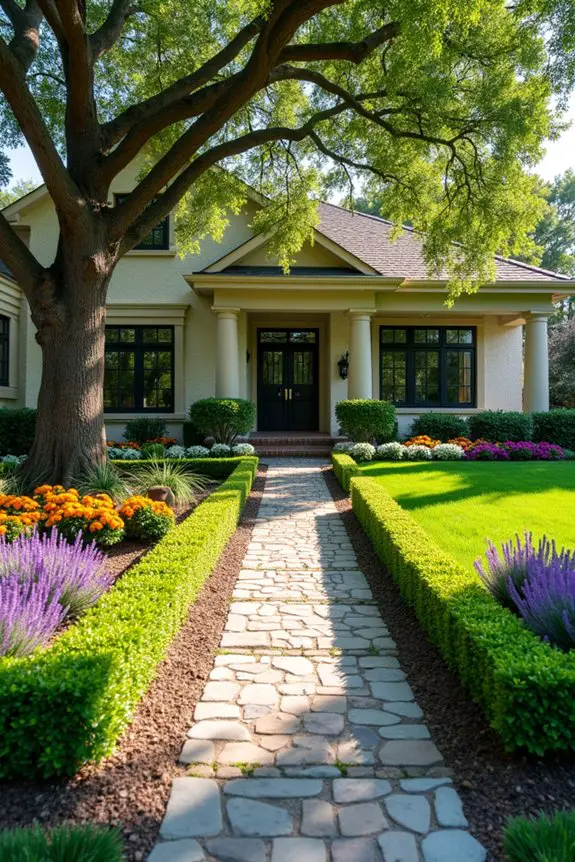9 Fall Garden Designs That Look Good Even After Everything Dies
Most gardeners watch their beloved outdoor spaces fade into brown, lifeless landscapes once winter arrives. However, smart designers create gardens that sparkle with beauty long after the final autumn leaf drops.
These masterful spaces feature evergreen structures, graceful ornamental grasses, and brilliant berry laden branches that transform dreary winter days into enchanting scenes.
From sculptural conifers to textural bark displays, nine specific design approaches ensure gardens remain captivating throughout the coldest months, proving that dormancy doesn’t mean dullness.
Quick Summary
- Evergreen plants like blue spruces, arborvitae, and boxwood provide year-round structure and visual anchor points.
- Ornamental grasses create flowing movement with feather reed grass plumes and fountain grass textures persisting through winter.
- Berry-producing plants like winterberry holly, dogwood stems, and beautyberry offer bright colors against gray winter backgrounds.
- Hardscape elements including stone pathways, retaining walls, and water features provide permanent structure during dormant seasons.
- Winter-interest plants with distinctive bark, branching patterns, and architectural forms create visual appeal when foliage fades.
The Evergreen Backbone Garden
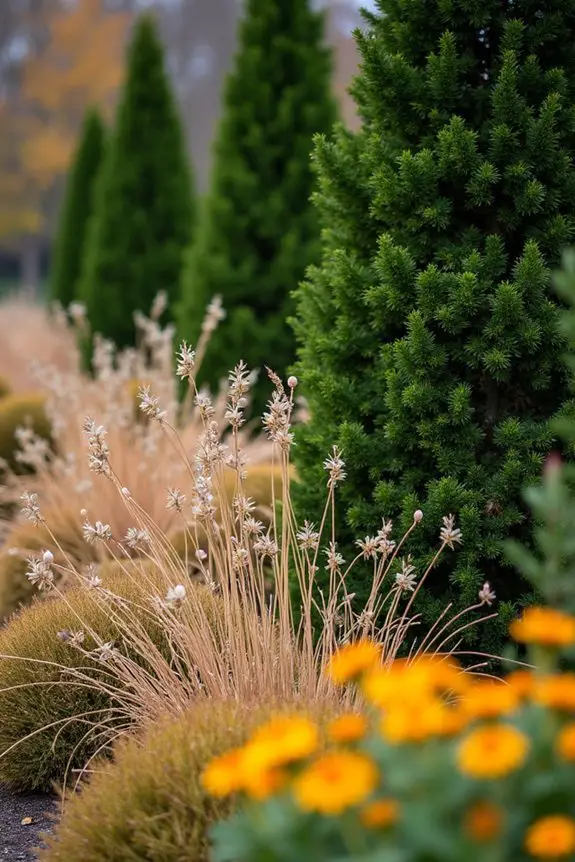
Every successful fall garden begins with a foundation of evergreen plants that provide year-round structure and visual anchor points.
Strategic garden placement of these steadfast champions creates breathtaking backdrops that shine when deciduous plants fade. Towering blue spruces and graceful arborvitae form dramatic silhouettes against autumn skies, while compact boxwood spheres add sculptural elegance to borders.
Evergreen varieties like emerald-hued junipers and silvery pine offer rich textures that catch morning frost beautifully. The Dwarf Globe Blue Spruce, with its bright blue needles year-round and globe shape when mature, makes an excellent choice for front yard landscaping that maintains visual interest through winter.
These reliable performers transform bare winter landscapes into enchanting wonderlands, ensuring gardens maintain their allure long after colorful leaves have danced away on crisp seasonal breezes.
And remember… many evergreen species serve as deer-resistant plants due to their tough, fibrous foliage that deer find difficult to digest and unpalatable.
Ornamental Grass Prairie Design
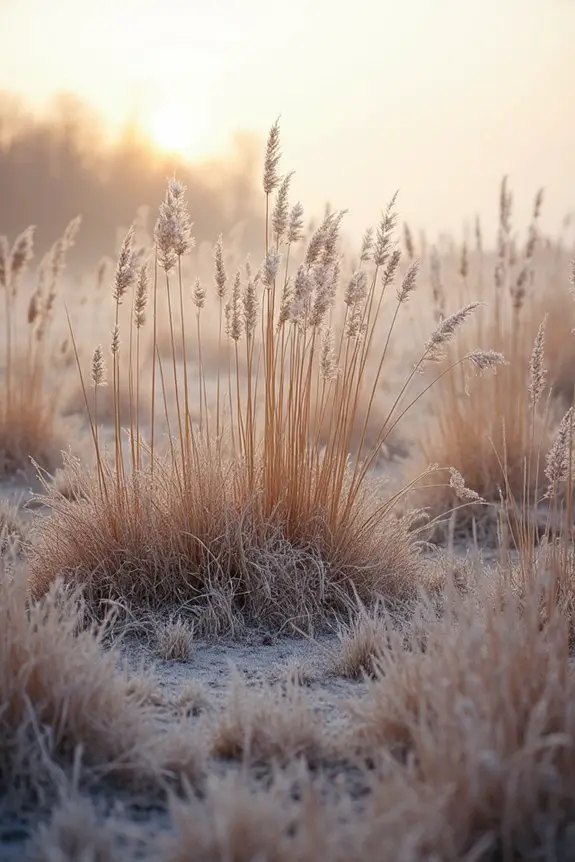
When autumn winds sweep across the landscape, ornamental grasses transform gardens into flowing prairies that dance with natural grace and movement.
Feather reed grass creates vertical columns of golden plumes, while fountain grass adds soft, cascading textures that catch morning light beautifully.
Purple muhly grass produces delicate pink clouds that seem to float above the earth like fairy dust.
These ornamental grass varieties require minimal water and thrive in poor soils, making them perfect for sustainable landscapes.
As drought-tolerant options, ornamental grasses add texture and movement to gardens while requiring little maintenance throughout the growing season.
Prairie maintenance tips include cutting back grasses in late winter and dividing clumps every three years for continued vigor.
Berry and Branch Winter Interest Garden
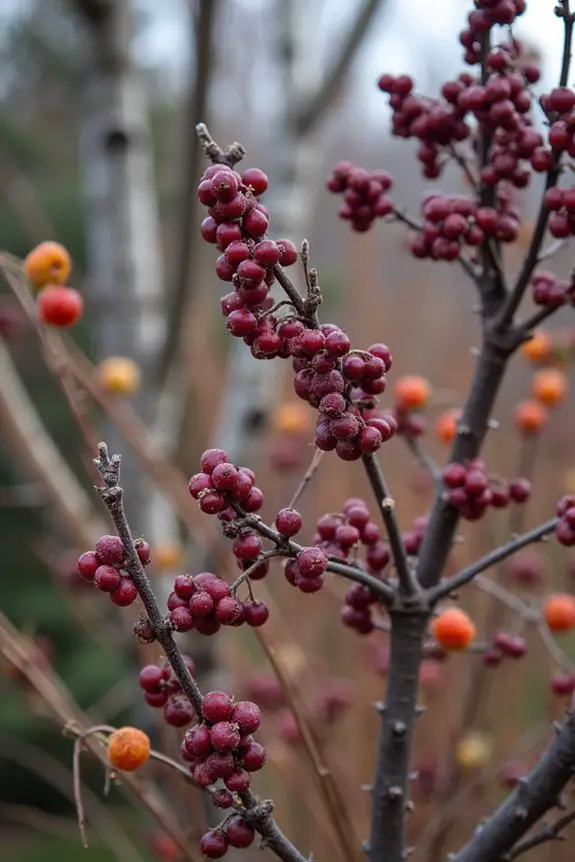
While grasses provide movement and texture through autumn, winter gardens come alive through the architectural beauty of bare branches and the jewel-toned sparkle of colorful berries.
These stunning combinations create dramatic focal points when snow blankets sleeping perennials.
Berry varieties like bright red winterberry and deep purple beautyberry shine against silvery birch bark, while branch textures add sculptural elements throughout dormant months.
| Plant Type | Winter Feature | Color Palette |
|---|---|---|
| Winterberry Holly | Bright red berries | Crimson against gray |
| Dogwood | Coral-red stems | Warm orange-red |
| Beautyberry | Purple clusters | Deep violet |
| River Birch | Peeling bark | Cream and copper |
Sculptural Conifer Collection
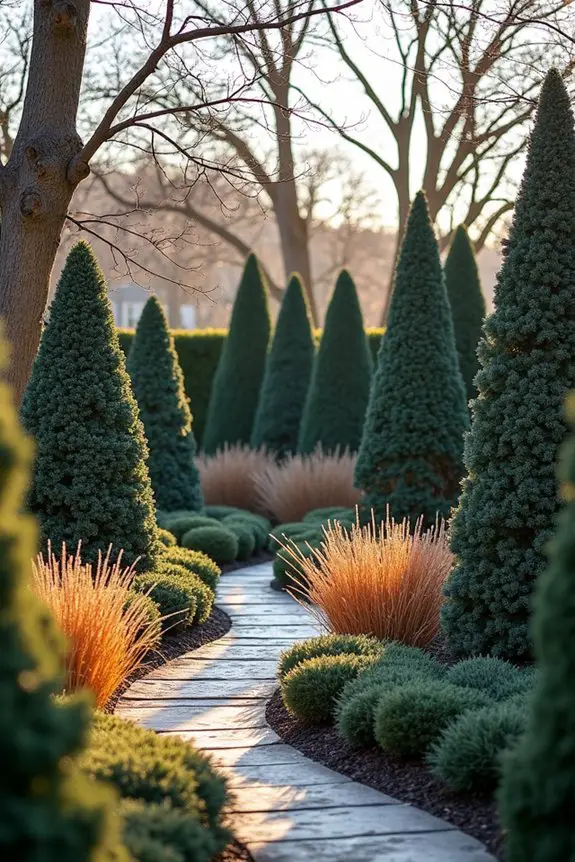
Architectural majesty defines the sculptural conifer collection, where evergreen giants transform winter landscapes into living galleries of form and texture.
Towering blue spruces create dramatic backdrops while weeping hemlocks cascade like frozen waterfalls. Dwarf mugo pines anchor corners with their dense, rounded silhouettes, and slender Italian cypresses pierce skylines like verdant exclamation points.
These conifer varieties offer unmatched seasonal interest, maintaining their striking presence when deciduous trees stand bare. Golden dawn redwoods glow against snow, while silvery atlas cedars catch morning frost on their layered branches, creating a winter wonderland that captivates throughout the coldest months.
Dried Seedhead Perennial Border
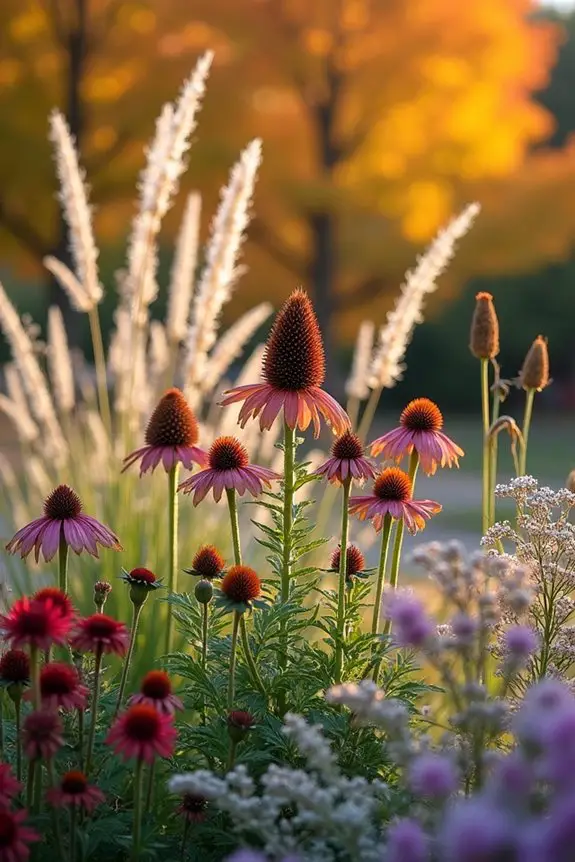
Beyond the structured elegance of evergreen architecture lies a softer poetry found in nature’s forgotten treasures, where dried seedheads create enchanting borders that whisper stories of seasons past. These rustic gems transform winter landscapes into wondrous wonderlands filled with architectural beauty and textural interest.
| Plant | Seedhead Color | Height |
|---|---|---|
| Black-eyed Susan | Golden-bronze | 2-3 feet |
| Purple Coneflower | Dark copper | 3-4 feet |
| Ornamental Grasses | Silver-beige | 4-6 feet |
Smart perennial border placement maximizes visual impact while dried seedhead maintenance requires minimal effort, leaving stems standing through winter for effortless elegance.
Four-Season Shrub Foundation
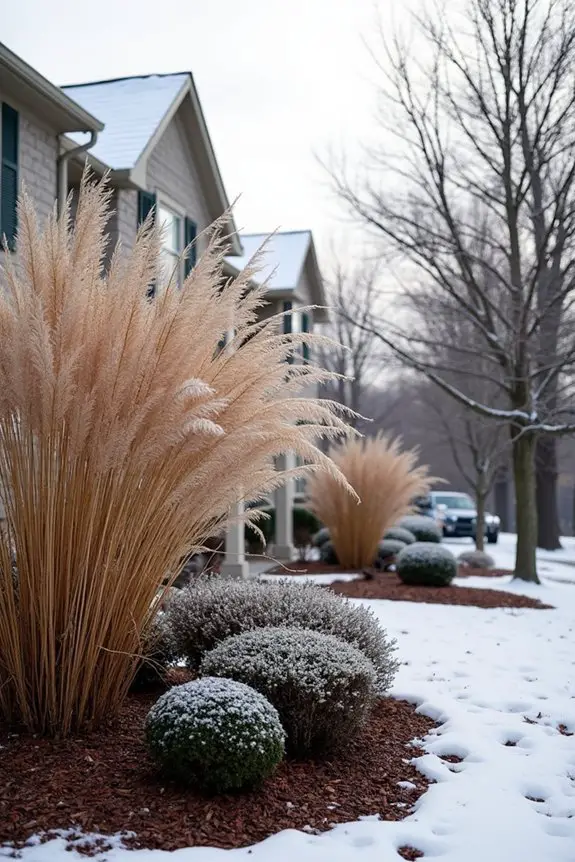
Four cornerstone shrubs can anchor any garden with unwavering beauty that evolves gracefully through every season’s dramatic transformation.
Strategic shrub selection creates lasting seasonal interest that carries gardens through winter’s stark months when perennials disappear.
Consider these foundation champions:
- Burning bush – fiery crimson autumn leaves give way to sculptural branching
- Winterberry holly – brilliant red berries shine against snow-covered landscapes
- Oakleaf hydrangea – burgundy fall foliage complements papery flower clusters
- Red-twig dogwood – coral stems create striking winter architecture
These reliable performers provide structure, color, and texture year-round, transforming ordinary spaces into enchanting outdoor sanctuaries.
Textural Bark and Stem Showcase
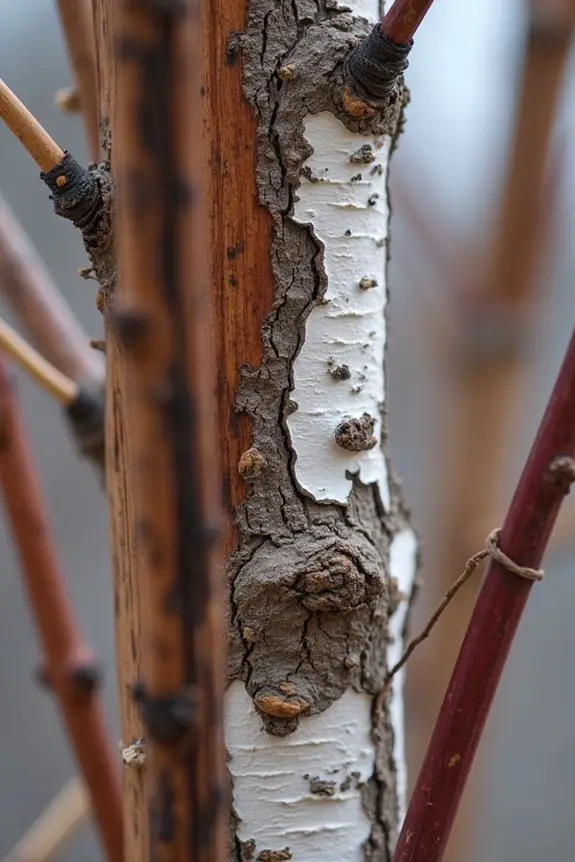
Winter’s quiet months reveal the garden’s hidden treasures when colorful foliage fades and stunning bark patterns emerge as nature’s most captivating artwork.
Paper birch displays gleaming white trunks with charcoal horizontal stripes, while coral bark maple glows with brilliant orange-red stems that seem lit from within.
Red-twig dogwood creates dramatic textural contrast against snow-covered beds, and cherry trees showcase rich mahogany bark with distinctive horizontal lenticels.
These architectural beauties transform seasonal transitions into spectacular displays, proving that winter gardens possess their own magnificent charm.
Strategic placement near windows or pathways ensures these sculptural elements become focal points throughout the coldest months.
Architectural Hardscape Integration
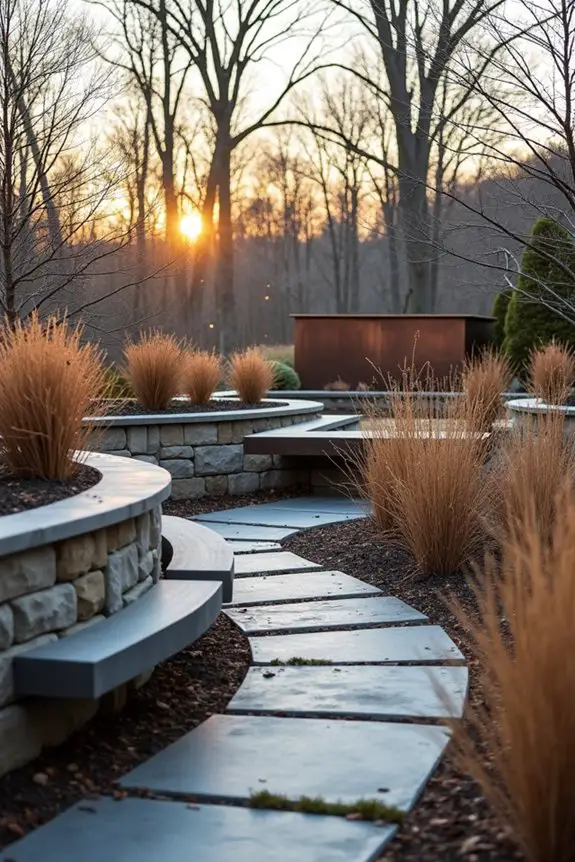
As autumn’s vibrant colors begin to fade, thoughtfully designed hardscape elements emerge as the garden’s permanent backbone, creating year-round structure that enhances every seasonal display.
Strategic placement of hardscape materials transforms ordinary spaces into sophisticated outdoor sanctuaries that maintain their beauty through winter’s dormancy.
Essential elements for achieving perfect design harmony include:
- Stone pathways that guide visitors through dormant garden beds with timeless elegance
- Retaining walls that create dramatic elevation changes and define planting zones beautifully
- Water features that provide soothing sounds and reflective surfaces during barren months
- Pergolas and arbors that frame views while supporting climbing plants year-round
Multi-Layer Winter Silhouette Garden
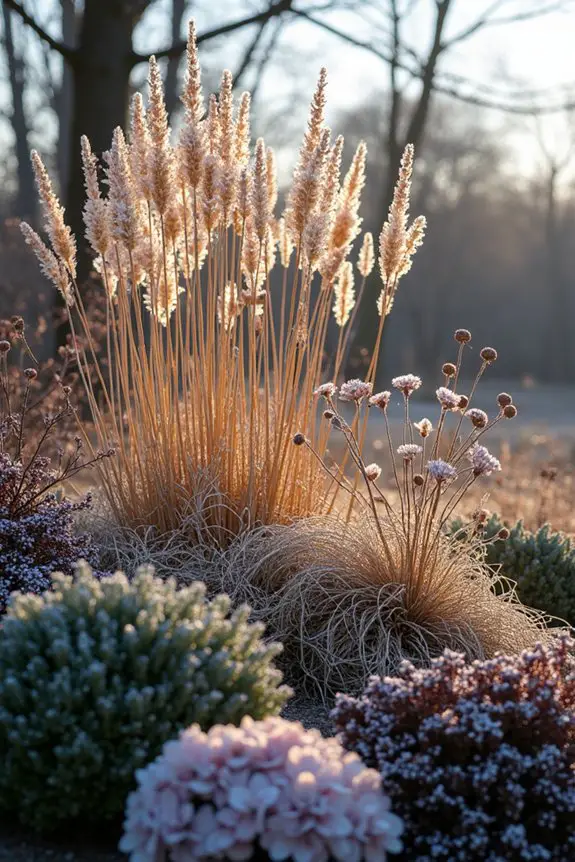
When snow blankets the earth and deciduous trees stand bare, the truly masterful garden reveals its hidden architectural beauty through carefully orchestrated layers of winter silhouettes.
Strategic layered planting creates depth and drama against pristine white backdrops. Towering evergreen spires pierce the sky while graceful ornamental grasses bow beneath winter’s weight, their golden plumes catching morning frost.
Sculptural shrub forms provide mid-level structure, while the stark branches of carefully chosen trees etch intricate patterns overhead.
This seasonal contrast transforms the garden into a living artwork, where each element contributes to a breathtaking winter tapestry of form and shadow.
Popular Questions
How Do I Protect Tender Plants From Frost Damage in Winter?
Gardeners employ various frost protection methods during winter plant care, including covering tender plants with frost cloth, mulching heavily around roots, moving containers to sheltered locations, and using water-filled walls or cloches to create protective microclimates.
When Is the Best Time to Start Planting a Fall Garden?
The optimal timing for fall planting depends on local frost dates and chosen crops. Gardeners typically begin fall planting six to twelve weeks before the first expected frost, allowing seasonal vegetables sufficient time to mature before winter temperatures arrive.
What Tools Do I Need for Winter Garden Maintenance and Cleanup?
Winter garden maintenance requires essential tools, including garden rakes for clearing debris and fallen leaves, sharp pruning shears for trimming dead branches, snow shovels for path clearing, and sturdy gloves for protection during cold weather cleanup tasks.
How Much Does It Typically Cost to Create These Garden Designs?
Garden design costs vary significantly based on budget considerations and chosen design elements. Basic layouts range from $500-2000, while elaborate designs with premium materials, professional installation, and extensive hardscaping can exceed $10,000 depending on scope.
Can These Designs Work in Small Spaces or Container Gardens?
Many design principles adapt well to small space constraints and container gardening environments. Compact layouts maximize visual impact through strategic plant placement, vertical elements, and seasonal structure that maintains appeal regardless of growing conditions or available square footage.

